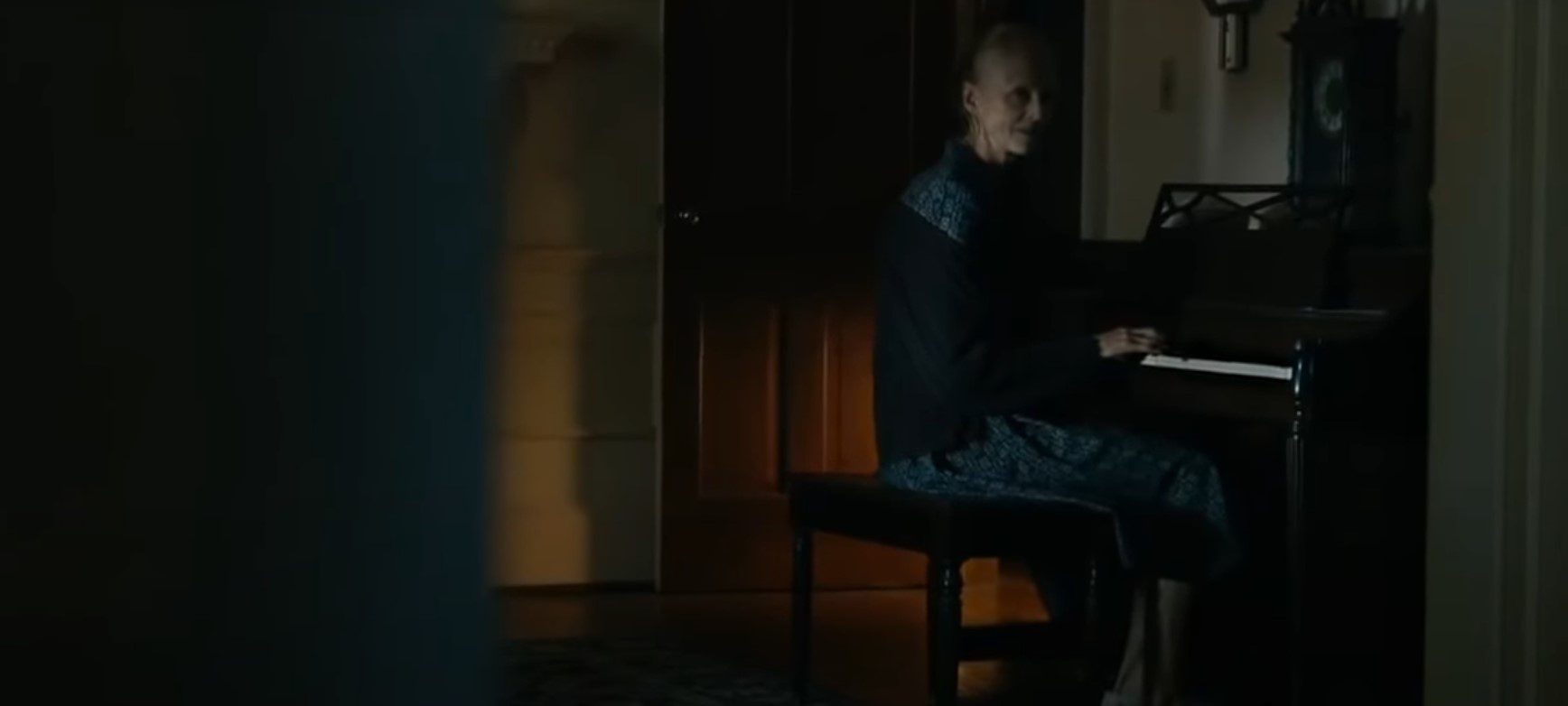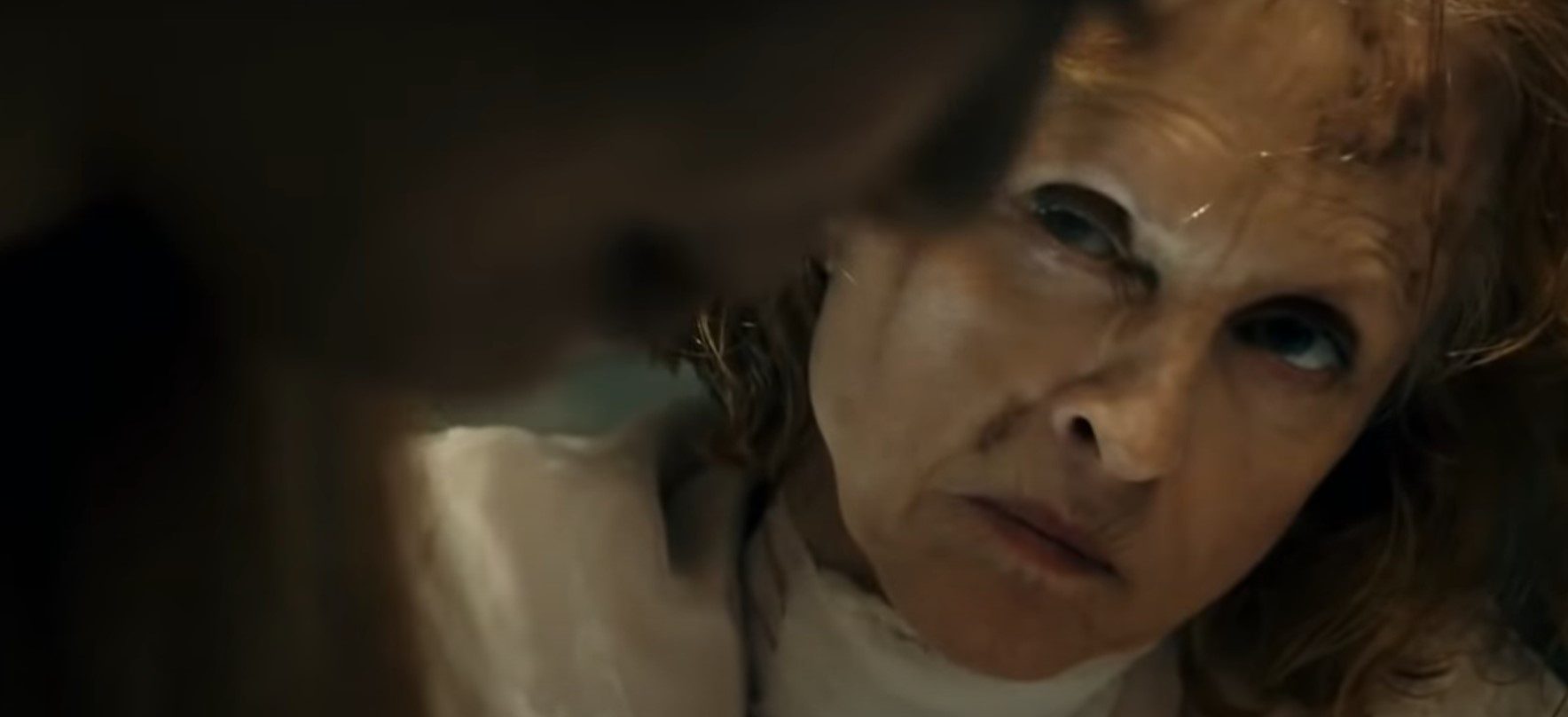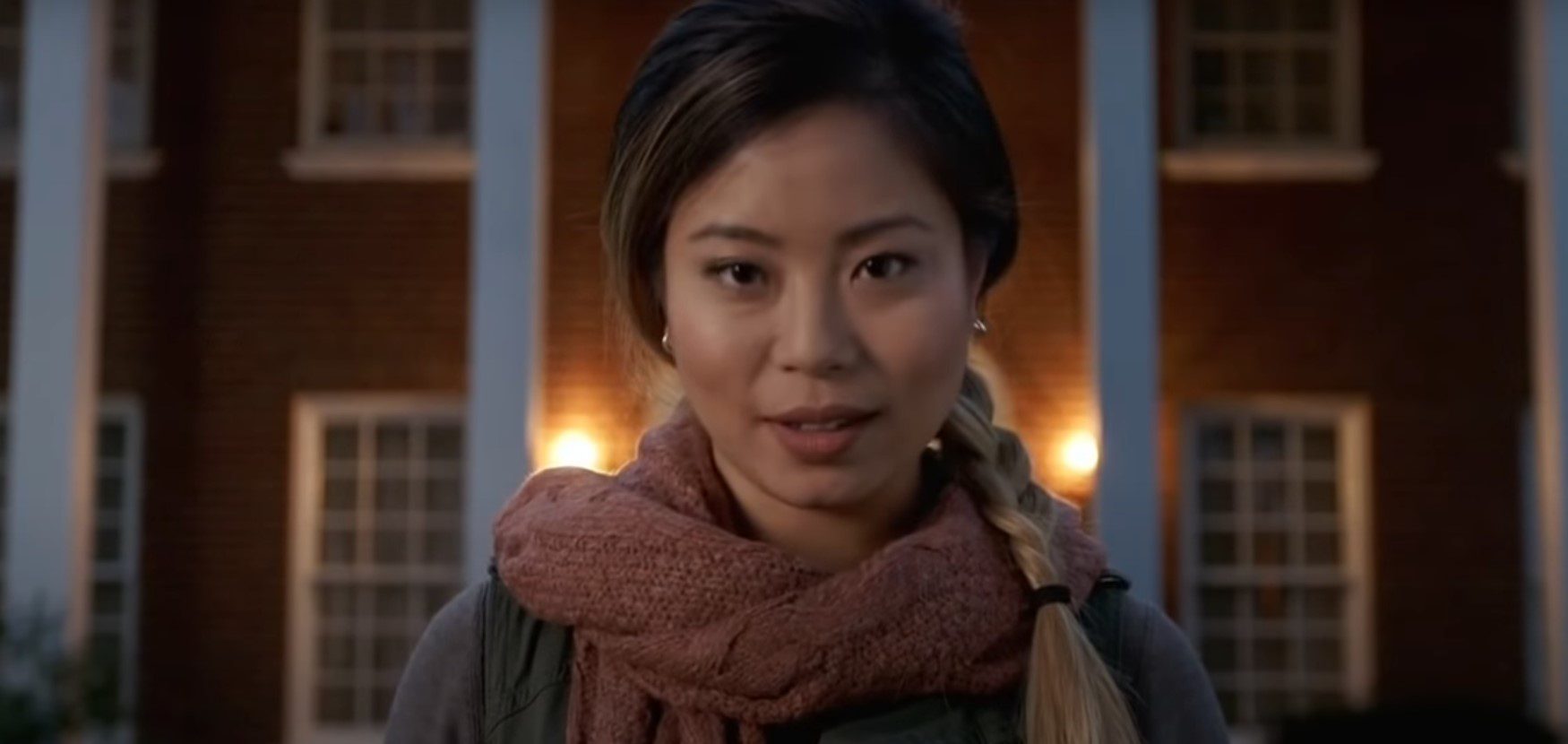The Taking of Deborah Logan, Adam Robitel’s possession thriller, is one of the more serious horror films, with a horrific climax and a sad and unsettling denouement. Robitel, who went on to direct the well-received Insidious: The Last Key, makes good use of the discovered footage framework, producing a realistic docudrama atmosphere that adds to the suspense.
The Taking of Deborah Logan ending leaves no doubt about Deborah’s motivations. The believable relationship between the ill title character and her daughter, on the other hand, is one of the reasons this film so successfully develops tension. The viewer is not given unambiguous evidence of possession until the third act, when the tangible manifestation of the supernatural is revealed. Deborah’s deteriorating mental state, which has been weighing hard on Sarah, generates a shared madness, nearly making the more odd happenings seem rational. Here’s an explanation of the film’s climax and finale.

The Taking Of Deborah Logan Plot
Students Mia Medina, Gavin, and Luis, want to make a documentary about Deborah Logan, an older woman with Alzheimer’s. Deborah begins to exhibit progressively strange behaviors as the film team documents her daily routine, which her physician says is usual for someone with an advanced type of Alzheimer’s. On the other hand, Cameraman Luis begins to realize that her behaviors defy reasonable explanations and expresses fear that something supernatural is happening. Things become increasingly tense after Luis and Gavin record an audio recording of Deborah babbling in French about sacrifices and snakes. They observe that the 337 lines at her switchboard are constantly ringing. The line belonged to local physician Henri Desjardins. Desjardins went missing after a series of cannibalistic ritualized killings of four young girls. Deborah’s behavior deteriorates to the point where she is hospitalized for her protection. Gavin leaves the film upset.
The others discover that Desjardins was allegedly attempting to duplicate an ancient Monacan rite that would have made him eternal but would have necessitated the deaths of five girls who had just had their first period. They are wondering if Desjardins possesses Deborah. Deborah’s friend Harris Sredl visits her in the hospital, and she asks him to murder her. He tries to comply but is knocked out by the creature that has taken possession of her. Deborah’s daughter Sarah, along with Mia and Luis, learns that Deborah unsuccessfully attempted to kidnap Cara Minetti, who has cancer. Sarah learns from Harris that Deborah discovered Desjardins’ plot to use Sarah as his fifth victim years ago. It prompted her to assassinate the doctor before he could carry out his plan, and she buried his body in the yard. The group discovers the body’s remains and attempts but fails to burn them.

The Taking Of Deborah Logan Ending Explained
Deborah successfully kidnapped Cara and transported her to the spot where Desjardins murdered his prior victims. Sheriff Linda Tweed follows Deborah into the mines after realizing she has gone missing, only to be slain. Sarah and Mia come across Deborah while she is attempting to consume Cara’s head in a snake-like fashion, and they manage to burn Desjardins’ corpse. The film then turns to news footage of reporters reporting that Deborah was ruled unsuitable to stand trial for her crimes and the kidnapping of Cara due to her health rapidly deteriorating in the months following the incident. Cara has recovered from cancer and is enjoying her tenth birthday. As the reporter wraps up the story, Cara looks to the camera and flashes a wicked smile, implying that Desjardins’ ritual has been completed and he now has possession of her body.
Mental Instability: Central Topic
Following the abduction, a sequence of news clippings provides the conclusion to the narrative. Because of her continuous mental degeneration, Deborah is found unsuitable to face trial for the death of Sheriff Tweed. In the film, Cara is shown several months later in complete remission from cancer. She is the picture of health as she celebrates her tenth birthday with her family. When asked about her plans, she responds that she has none. When questioned further, she admits she has a plan, but it is a closely guarded secret. The newscaster concludes, “It’s an extraordinary story – with such a wonderful conclusion.” Cara turns to face the camera with a cautious smile—Desjardins is most likely in command.
The screenplay, written by Robitel and Gavin Heffernan, who also worked on the script for Paranormal Activity: The Ghost Dimension, successfully blends the otherworldly with a grounded human drama. The film works on multiple levels by using possession as an allegory for the horrible anguish that Alzheimer’s may inflict. The fact that Deborah has the condition allows the filmmakers to emphasize the more sinister consequences. Sarah’s story vividly depicts the sentiments of loss, desperation, and sheer helplessness that family of the affected frequently endure. The shame children often experience when they cannot provide crucial medical attention to their ailing parent is also examined.
Also Read: What Lies Beneath Ending Explained: What Happened To Claire?




